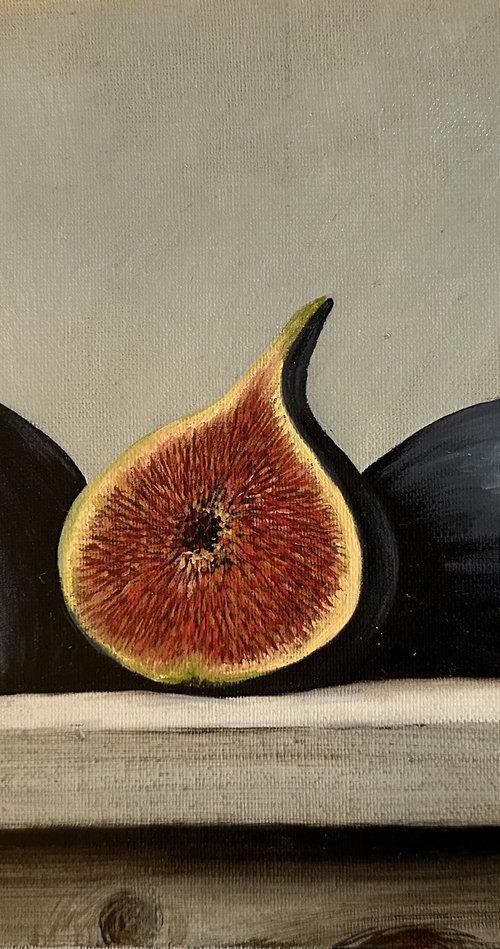Checking out All Concerning Oil Paints: A Guide to Comprehending Their Appeal and Worth
Oil paintings have captivated target markets for centuries, offering a glance right into the imaginative proficiency of various eras. Their abundant background is intertwined with innovative techniques and extensive psychological expression. Understanding the materials and approaches behind these art work can enhance gratitude. Furthermore, the market for oil paints provides opportunities for financiers and collectors alike. As one explores this fascinating globe, the concern occurs: what makes an oil painting absolutely useful?
The History of Oil Paint: A Trip With Time
Oil paint has roots that date back to old times, it really prospered during the Renaissance, when musicians discovered its versatility and rich color capacity. Early instances can be mapped to the 7th century, with methods developing especially across societies. The medium ended up being popular in Northern Europe in the 15th century, specifically through the jobs of musicians like Jan van Eyck, who originated its usage for comprehensive realistic look and vibrant colors. This duration marked a separation from tempera paints, permitting better depth and structure. As oil painting spread, it influenced plenty of musicians, leading to masterpieces by distinguished numbers such as Leonardo da Vinci and Rembrandt. The medium's tradition proceeds, shaping the art globe well right into modern times.
Understanding Oil Repaints: Products and Techniques
As artists check out the globe of oil paints, they encounter a diverse selection of materials and strategies that define this medium. The main elements of oil paint include pigments, which provide color, and drying oils, such as linseed, that bind the pigments and promote application. Different ingredients can customize the paint's appearance and drying out time, enhancing versatility. Techniques like glazing, where clear layers are developed, and impasto, which entails applying thick paint, permit different visual effects. In addition, the use of brushes, scheme knives, and even fingers can produce special appearances and coatings. Understanding these methods and products makes it possible for musicians to totally share their creative thinking and attain the wanted influence in their art work.
The Role of Color in Oil Paints
Shade plays a pivotal duty in oil paintings, affecting both aesthetic charm and emotional resonance. Understanding color theory basics, including the relationships in between shades, can boost an artist's ability to share mood and ambience. In addition, grasping shade blending techniques permits for better depth and splendor in a painting's scheme.

Color Theory Basics
Comprehending shade concept is important for artists dealing with oil paints, as it forms the foundation for producing harmonious and visually appealing structures. Color concept includes the study of exactly how colors engage, the color wheel, and the relationships between primary, second, and tertiary shades. Artists utilize corresponding shades to improve contrasts and produce centerpieces, while comparable colors promote unity and cohesiveness within an item. Furthermore, the concepts of awesome and cozy colors affect the perception of deepness and room in a paint. Comprehending these principles allows musicians to control color properly, assisting the customer's eye and interacting their intended message. Proficiency of color concept ultimately enriches an artist's ability to share emotions and ideas through their job.
Emotional Influence of Shade
The emotional effect of shade in oil paintings plays an important duty in how visitors regard and connect with artwork. Shades evoke certain sensations and state of minds, affecting the visitor's emotion. Cozy hues like reds and oranges can create a sense of heat and power, while trendy tones such as blues and greens usually stimulate peace or introspection. Artists strategically select color combinations to boost narrative aspects, leading the target market's psychological trip. The saturation and comparison of shades better enhance these impacts, drawing interest and creating focus. Inevitably, the interplay of shades in oil paintings not only improves their aesthetic appeal but also serves as a powerful tool for psychological expression, enhancing the visitor's experience and analysis.
Color Mixing Techniques
While many aspects of oil paint add to the total make-up, understanding shade blending strategies is important for achieving wanted results and depth. Color mixing can be approached through various methods, including the additive and subtractive procedures. Additive mixing involves incorporating shades of light, while subtractive mixing counts on pigments, where colors blend to develop new shades. Artists typically utilize a minimal combination to create unified works, understanding the partnerships between primary, second, and tertiary shades. Methods such as glazing and scumbling even more boost depth and luminosity. By masterfully mixing shades, an artist can evoke feelings, produce focal points, and achieve a feeling of realism, ultimately boosting the paint's psychological and aesthetic effect.
Famous Oil Painters and Their Iconic Works

Famed for their mastery of color and method, oil painters have actually developed a few of one of the most celebrated artworks in history. Prominent artists like Vincent van Gogh astounded target markets with his emotive brushwork in "Starry Evening," while Claude Monet's "Impression, Dawn" prepared for Impressionism. Leonardo da Vinci's "Mona Lisa" remains a long-lasting symbol of imaginative genius, showcasing his ability in catching human expression. At the same time, Rembrandt's "The Evening Watch" highlights his cutting-edge usage of light and darkness. Various other remarkable numbers consist of Pablo Picasso, who transformed contemporary art with his bold experimentation in works like "Les Demoiselles d'Avignon," and Georgia O'Keeffe, whose lively representations of flowers and landscapes helped specify American innovation. Each artist's distinct style contributed significantly to the oil painting landscape.
How to Review the High Quality of an Oil Paint
Reviewing the top quality of an oil painting involves a mindful analysis of craftsmanship techniques, along with an evaluation of color and make-up. Observing brushwork, layering, and the application of paint can disclose the artist's skill degree. Furthermore, the interplay of shades and the general arrangement of components contribute considerably to the paint's aesthetic value.
Evaluating Craftsmanship Methods
A precise assessment of workmanship techniques is important for determining the top quality of an oil painting. Critics should initially check out the application of paint; thick, textured brushstrokes may recommend an experienced hand, while overly uniform applications could show a lack of depth. oil paintings for sale. The layering strategy is likewise important; the presence of lusters and varied density can improve brightness and complexity. In addition, the top quality of the materials made use of, such as the canvas and pigments, plays a substantial function in sturdiness and overall visual. Interest to detail in components like edges and shifts in between shades shows the musician's commitment to their craft. Inevitably, these techniques contribute to the paint's emotional effect and click here market worth, functioning as signs of the artist's ability and intent
Assessing Color and Make-up
While examining the quality of an oil paint, one have to focus on the interplay of shade and composition, as these elements are basic to the art work's total impact. Color options can evoke feelings and establish state of mind; as a result, the musician's palette ought to be checked out for consistency and comparison. A healthy composition directs the customer's eye and produces a feeling of unity. Musicians often employ techniques like the guideline of thirds or leading lines to enhance aesthetic passion. In addition, the usage of light and darkness can add deepness, improving the three-dimensionality of the painting. Eventually, a successful oil painting marries shade and make-up, involving the visitor and welcoming a much deeper recognition of the musician's vision and strategy.
Taking care of and Preserving Oil Paintings
Correct treatment and preservation of oil paintings is important for maintaining their integrity and long life. To shield these art work, it is essential to display them away from straight sunshine, which can create fading and discoloration. Maintaining a stable environment with regulated temperature level and moisture additional aids in avoiding damage. Cleaning up must be done carefully using a soft, dry towel, staying clear of any type of extreme chemicals that could damage the paint or varnish. Normal assessments for signs of wear and tear, such as flaking or breaking, are recommended. When storing or transferring oil paintings, correct extra padding and framework are needed to prevent physical harm. Ultimately, attentive care adds to the aesthetic allure and worth of oil paintings over time.
The Marketplace for Oil Paints: Spending and gathering
Comprehending the marketplace dynamics for oil paintings is essential for enthusiasts and investors alike. The worth of these art work is affected by numerous variables, consisting of the musician's credibility, historic significance, and present fads. Collectors commonly look for pieces that resonate personally while taking into consideration potential gratitude in worth. Galleries and public auctions act as primary locations for trading, with prices varying based upon need and rarity. Purchasing oil paintings requires research study right into the marketplace, as well as an understanding of authenticity and provenance. In addition, arising musicians might offer chances for substantial returns, while developed names can regulate high rates. In general, a calculated strategy to collecting can produce both aesthetic pleasure and monetary benefits.

Regularly Asked Questions
What Are the Environmental Influences of Oil Paint Materials?
The ecological impacts of oil painting materials consist of the release of volatile natural compounds (VOCs), unsafe waste generation, and resource extraction for pigments. These variables contribute to pollution and environmental deterioration, elevating problems amongst environmentally conscious artists and consumers.
Exactly How Do Various Canvases Influence Oil Paint Outcomes?
Different canvases influence oil painting results significantly. Surface, structure, and absorbency quality can alter paint application, drying out times, and shade vibrancy. Artists frequently select particular canvases to achieve preferred effects and enhance their artistic expression.
Can Oil Paintings Be Recovered if Harmed?
If damaged, Oil paintings can certainly be recovered. Specialist conservators utilize various methods to fix rips, tidy surfaces, and address discoloration, making certain that the artwork keeps its original elegance and worth for future generations.
What Are the Signs of an Original Oil Painting?
The indications of an original oil painting include visible brush strokes, structure variants, and an irregular canvas weave (oil paintings for sale). In addition, authenticity may be confirmed with provenance, signatures, and the existence of a varnish layer special to oil tools
Just How Has Modern Technology Influenced Modern Oil Paint Techniques?
Technology has actually significantly influenced modern oil painting techniques by introducing digital tools for planning, enhanced materials for texture and longevity, and on the internet platforms for sharing and offering art, consequently increasing artists' creative possibilities and audience reach. Oil paint has origins that date back to old times, it really flourished during the Renaissance, when musicians discovered its convenience and rich shade potential. The emotional influence of shade in oil paints plays an important role in exactly how visitors connect and perceive with art work. While several facets of oil paint contribute to the general make-up, grasping shade blending strategies is important for accomplishing wanted impacts and deepness. Examining the high quality of an oil painting entails a careful evaluation of craftsmanship methods, as well as an evaluation of shade and composition. While assessing the high quality of an oil paint, one have to focus on the interplay of color and composition, as these aspects are essential to the art work's total influence.
 Jason J. Richter Then & Now!
Jason J. Richter Then & Now! Bug Hall Then & Now!
Bug Hall Then & Now! Gia Lopez Then & Now!
Gia Lopez Then & Now! Lacey Chabert Then & Now!
Lacey Chabert Then & Now! Robin McGraw Then & Now!
Robin McGraw Then & Now!